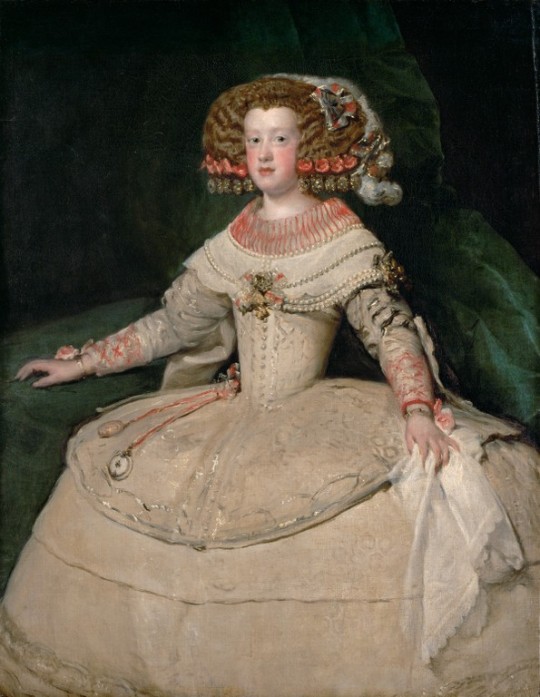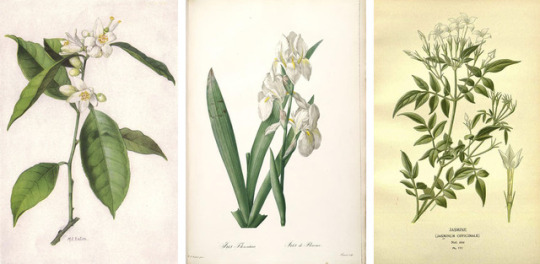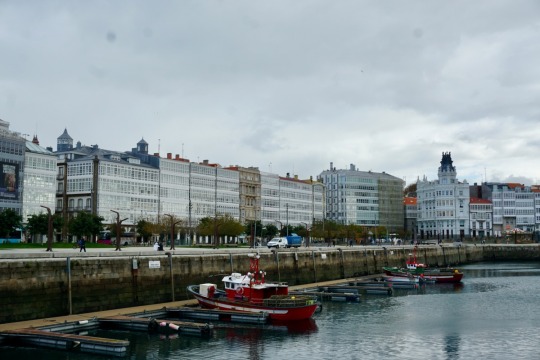#history of Spain
Explore tagged Tumblr posts
Text
𓈒᭡ 𝐀𝐋𝐋 𝐓𝐇𝐄 𝐃𝐀𝐔𝐆𝐇𝐓𝐄𝐑𝐒 𝐎𝐅 𝐅𝐄𝐑𝐍𝐀𝐍𝐃𝐎 𝐕𝐈𝐈.




𓈒🎀 𝟏. Maria Isabel Luisa de Borbón, Infanta of Spain (1818).
𓈒🎀 𝟐. She died in childbirth, she has no name.
𓈒🎀 𝟑. Isabel II (María Isabel Luisa de Borbón), Queen of Spain (1833- 1904).
𓈒🎀 𝟒. María Luisa Fernanda de Borbón, Infanta of Spain (1832 - 1897).
ㅤㅤㅤㅤ၄ㅤׂㅤㅤ⊹ㅤㅤ︵⏜︵ㅤㅤ࣭ㅤㅤ⊹ㅤ၃
23 notes
·
View notes
Text
Flying Man of Islamic Spain: Abbas Ibn Firnas

The story goes that Abbas Ibn Firnas, a 9th-century polymath from Al-Andalus (now Andalusia, Spain) constructed a device that resembled wings and attempted to fly. This event is noted to have occurred many centuries before Leonardo da Vinci sketched his famous flying machines or the Wright brothers successfully took to the skies.
While the exact mechanics of Ibn Firnas’s flight are not clearly recorded, many historians agree that he did create a device to aid in human flight and bravely tested it himself.

His landing was rough as he overlooked adding a tail to his apparatus (apparently, the key for balance and stability in the air). It caused some injuries but also provided an important insight for the next generations of flight pioneers.
1. "Eilmer of Malmesbury, an Eleventh Century Aviator: A Case Study of Technological Innovation, Its Context and Tradition" by Lynn Townsend White Jr., 1961;
2. "The Book of Ingenious Devices" by the Banu Musa brothers. While primarily focusing on mechanical inventions, this text contextualises the scientific environment of Ibn Firnas's time, helping to understand his motivations and innovations.
#culture#art#history#history art#illustrative art#islamic art#islamic spain#andalusia#engraving#fun facts#history of spain#ai experiments#illustration#flight#technology#aviation#planes#airplane#spain
5 notes
·
View notes
Text

F: THE CONQUEST OF GRANADA
F1: King Fernando II of Aragon, late 1480s
Fernando was a capable and courageous field commander, who was nearly captured or killed during a number of his campaigns against Granada. He is depicted here in an armour attributed to him and preserved in the Kunsthistorischesmuseum in Vienna. It is of late 15th-century Italian style but incorporates a number of Spanish details, such as the ‘fish-tail’ plackart covering the lower part of his breastplate.
F2: Queen Isabel I of Castile, late 1480s
During the first half of the war against Granada the energetic ‘queen-at-arms’ served as political advocate, war counsellor, and chief coordinator for the provision of troops, supplies, and money from Madrid. But to maintain the loyalty of their heterogeneous army it was necessary for the ‘Christian Monarchs’ to keep themselves visible to the troops, and during the later campaigns Isabel moved to the frontline camps. There she established both field kitchens and field hospitals for the wounded and sick, and came to be regarded by many of her soldiers as another Joan of Arc (a figure whom Isabel revered). Her appearance here is based on an image carved on a choir stall from Toledo Cathedral, where she is portrayed entering the conquered city of Gor in armour and carrying a mace of command.

- Armies of Castile and Aragon 1370–1516, John M.D. Pohl PhD, Illustrated by Gerry Embleton
7 notes
·
View notes
Text
There is a peculiar experience of Spanish 90s kids that I don't know if it was frequent in other countries at the time (particularly in Europe, but I welcome more input) which is: The Drug.
Well, everyone has seen a junky, specially if you live in certain areas or go to certain places but in the 90s, as a 5 year old kid, The Drug had an omnipresent presence that was difficult to understand and it fascinated and scared me.
This will be long and it will be full of references to well, drugs (particularly heroin) and addiction. It is recent history of Spain as well and if you are learning Spanish or planning to come to Spain, it might interest you because it still has ramifications and references in pop culture. More under the cut.
When I was a baby (so last couple of years in the 80s), my mother remembers taking me to a nearby park and having a kindergarden come to play. Before playing, the children would all spread out and yell "here!". The teacher would go wearing gloves and take a syringe to put in a bag. After this, children would be allowed to play there.
One could think "why go to that park then, maybe go to another one cleaner" but syringes in parks was standard. I remember seeing some when I was around 10 years old (the last one, I think). I also remember a nightmare I had when I was about 6 where the park we would usually play had syringes instead of sand. For years, seeing syringes was a trigger for me that would guarantee me nightmares that night. Even now I struggle with the sight of it.
I remember when we were 4 or so we were shown a shortfilm with cartoons about The Drug. It was quite abstract and it scared the hell out of me. The Drug was some big purple blurb who came from underground. I do not know why would they show this to children so young, probably to scare them in an attempt at preventing drug addiction but I'm not sure that was the wisest move.
There were ads created by the Fundación de Ayuda contra la Drogadicción (Foundation to Help against Drug Addiction) that fascinated me. I do not remember them much but they were everywhere and then they stopped (I guess when things improved?). They weren't necessarily scary but there were many. I remember one about a teenager playing basketball on his own and a voice over because I couldn't understand what it was about (I just watched it for the first time since 1992 and if it isn't a sign of the times*... the message is "the ultimate responsible person in the fight against drugs is not a politician or a high profile personality. You are").
You can look up some of the ads in Youtube if you look for the name of the foundation, the latest where in the beginning of the 2000s. This one below was very famous. The "NO." at the end was everywhere too. It really is a very interesting and long-lasting campaing to study if you like marketing and advertisement:
youtube
So yes, it was everywhere but nobody really explained anything and it kind of stopped around the 2000 so by the time I was a teenager, it felt like a dream I had. Only once I was an adult and I could see the history of it all and the chronology I could understand what was all that about and that I may have been overly sensitive to it all but it really was everywhere.
A bit out of track, I don't know if it stopped being A Thing in the 2000s for real or if they just considered it so. But it kind of stopped being everywhere. EDIT: I looked it up and publich health politics improved a lot in the 90s, so things did change and got better globally. Statistics from the 80s and drugs in Spain are WILD.
It is true however that the heroin problem we had in the 80s-90s hasn't got as bad (I think cocaine is now the main one, even though heroin is showing up near but smoked, not injected). Heroin entered Europe (yes, Europe, Spain is the main door for many drugs that go up north) through Galicia, due to the fact that the dictatorship ended in 1975 and many corrupt politicians had (and still have) ties to big drug dealers. [*Remember the ad about the basketball kid? Isn't it interesting that the one responsible for not being an addict is said kid and that it clearly states "it's not a politician"?]
In short, there are villages in Galicia where a whole generation was lost to drugs. You can watch the movie "Heroína" (2005) about the Galician mothers who decided to fight back once they saw how their children were falling one after the other under the charms of The Drug. By now, I think you have understood that The Drug is heroin, and that is how many people speak of it in Spain. The global idea behind La Droga is heroin.
Other recent-ish movies that show more or less life in Spain at the time and how young people got into drugs could be Barrio (1998) and Bailame el agua (2000, apparently translated as "Fill me with life"). Barrio is a classic, even though the drug is not a main character and even barely appears, but it helps seeing Madrid at the time (featuring my neighbourhood in one scene) and how the situation was starting to change. Bailame el agua is a bit Requiem for a dream, I feel it's a bit out of time in that, as I said, things were starting to change in the 2000s.
However, if you want to see the depths of the whole thing in the 80s, there is a whole sub-genre of cinema dedicated to it: el cine quinqui (I write it like that so that you don't read "kinki" as "kinky" because it isn't that AT ALL). Quinqui is a very poor neighborhood kind of person, marginalised, petty criminal. And this cinema features this kind of people as the main characters (and also the main actors, as the actors were generally poor neighbourhood kids). The main representative of this genre (the creator even) is Eloy de la Iglesia. His movies are not Good Cinema but they are almost documentaries of the time, to the point that I think only him and another secondary actor of his have reached the 2010 alive. It was a short-lived genre not only because of the topic but because his actors died very young, within a couple of years, in drug-related things (overdose, car accidents for being high, AIDS...). Imagine Trainspotting knowing that all the actors were poor kids casted for the role and that heroin was rampant the whole time whey were making the movie. The main movie from this director and genre is El Pico (1983). Speaking about it would require its own post, let me know if you want me to write about it.
Anyways, now that we have a glimpse to the chronology backwards, we can see (as I just saw while writing this) that one of the last ads of the FAD was in 2002, Bailame el agua was made in 2000 and Heroína in 2005. So by 2005 it seems people were ready to speak about what happened 20 years earlier and was still happening 10 years before, even though some people considered this epidemic still reached the year 2000.
In 2007, La torre de Suso was made, another movie related to the 80s drug epidemic. It is a comedy (very funny, do recommend) about a group of friends who reunite after 10 years because one of them, Suso, died. It is set in Asturias (also the North of Spain, relatively near to Galicia) and I mention it because here is where we can start to see the shift from present to past. These 40 year old men were all 80s junkies and Suso is the only one who couldn't quit the drug.
This serves me to connect with a general representation of the generation itself and of the concept "Yonki de los 80", the ones who didn't die and didn't quit and are still sticking around as shadows from what it once was. In 2014, a sitcom called Aída featured El Luisma who had a catchphrase: "Ah, so because El Luisma has taken all kinds of drugs he is now an idiot, right?". Given the age of the actor and the character, he is more a product of the 90s than the 80s but still reflects that period of, let's say, 10 years when it was easy and everywhere and everyone knew someone who had a problem. Now, many of the people who were into heroin in the 80s-90s are in their 60s, many are clean but still have health-issues related to it, or their mind is not up to speed, so to say.
When I was a teenager (late 90s-early 2000s), there was a junky, probably in his 30s who liked to hang out with a group of teenagers (some of them are now addicts themselves, who would have thought). He was chaotic and lost in his mind, but he was friendly and chatty and never gave any trouble. This wasn't an exception. All neighbourhoods and parks have a junky. Everyone in my generation knows someone like this. Everyone in my parents' generation knows (or knew) several people like this, some of them direct family members. This also shows how things have changed, at least in the surface level.
In any case, these characters and the consequences of their actions still appear frequently in media and are still a reference. I only mentioned movies because I think they are easier to follow and they give more information than songs, even though there is a very famous pop-rock group, Estopa, that honors the tradition of speaking about daily life of poor people in songs and already in his first album (1999) had songs about addiction. There are books too, like Canijo, published in 2022, that tell the story of a Sevillian family and the addiction of Canijo, one of their kids. Apparently it's parly autobiography. I haven't read it because this whole thing, as fascinating as it is to me, is also very triggering and I have a very vivid imagination, particularly through books.
It is a topic that still affects me emotionally, although not as much as when I was younger. It was a thing that was very very present and luckily it's not as bad as it once was. It really marked a couple of generations and I think I kind of feel we are alone now, it's not really spoken of (because it hurts, I understand) but it permeates jokes and worries and I feel it's necessary to still speak about it so that younger generations understand where some things come from.
5 notes
·
View notes
Text
86. Famines are social phenomena: Shortage and Famine in the Late Medieval Crown of Aragon by Adam Franklin-Lyons.
It turns out that the medieval food supply chain is fairly resilient right up until the point you have a widespread set of overlapping crises… The vast majority of my writing here is free to read and will remain so, but if you enjoy these sorts of posts, your support on Patreon or as a paying subscriber through WordPress is what subsidises me to write more of them. And — since I’ve abandoned the…

View On WordPress
1 note
·
View note
Text
i should be studying rn but i feel like id rather be put in a mental hospital to crochet while looking out the window to the garden iykwim
0 notes
Text

Sa Majesté sur son cheval
#painting#art history#José de Madrazo#Fernando VII#history of Spain#Roi Fernando VII#rey de españa#à cheval
1 note
·
View note
Text
Remembering how some spanish right wingers believe that the "El Cid Campeador" Poem was a true fact passed it irl in the Iberian Peninsula,is a poem what idolize a mercenarie saying he was who get out of Spain the Islamic people,and fought a lion
Reminiscense of Heracles/Hercules maybe
But obviously that never happened,you fought a lion and you're dead,also the islamic people while the invasion on Spain,let christianism alive and let them marriage with islamic people,and gave us some greek philosophers traducted
#history of spain#history#spanish poetry#right wingers has no idea#how the fuck you can think you will survive against a lion#i know this website is mostly english
0 notes
Text



19 notes
·
View notes
Photo
These two perfumes would be interesting to include in fanfic about the relationship between France and Spain 😭







We all, as the history nerds we are (yes, I’m talking about me and you all dear readers), have thought about what did a moment in time long gone was like, what it looked like, what it sounded like, what was worn and where it happened. Well, someone went a step forward and asked himself what did a moment in a certain time and place smelt like. That man is Carlos Huber and he’s the founder of Arquiste, a perfume brand that create fragrances meticulously researched with historical sources to transport us to another time and place. Each fragrance has its own little story with historical setting and place; so you can find something inspired by and Aztec festival in the 15th century or a night in the Paris Opera in the late 19th century. Sounds awesome, don’t you think?
And it smells even better.
Here are two of my favourite fragrances by Arquiste, both inspired by the wedding of Louis XIV and the Infanta Maria Teresa, and since we’re in a 17th century mood, I thought this was the time to share this with you all (this sounds like a commercial but it is not, this perfumes are just so so SO good that I wish everyone knew about this brand). Imagine this:
It’s June 1660, you are at the Isle of Pheasants in the Basque region of the French-Spanish border. Spain was France’s political enemy, so this marriage would give a new balance of power in Europe. Both royal courts are in a pavilion built for this occasion of pine and cedar wood.
On the French side is a 22-year-old Louis XIV, dubbed the ‘sweetest smelling monarch’, he had a never ending love for orange blossom (he imported a thousand orange trees from Spain and made the largest orangerie) and even had his own fragrance called Acqua Angeli, there he is all starchy and elegantly dressed and totally missing the protocol he presented himself to catch a glimpse of his new bride. His fragrance, Fleur de Louis, has notes of orange blossom, Florentine iris, Jasmine, Rose and cedarwood.
On the Spanish side is the also 22-year-old Infanta Maria Teresa, the Spanish Princess represents the peace between the two nations, perfumed with orange flower water (a quite clean and innocent scent), the rouge smells of roses, the Spanish perfumed leather gloves and the scented fan are there while Louis lays his eyes on her for the first time. Her fragrance, Infanta en Flor, has notes of Orange flower water, Spanish leather, cistus resin and immortelle.
Images from top:
“Portrait of Louis XIV”, 1661, Charles le Brun.
“The infanta Maria Theresa of Spain”, 1653, Diego Velázquez.
Fragrance Fleur de Louis, Arquiste, developed with Rodrigo Flores-Roux.
Fragrance Infanta en Flor, Arquiste, developed with Yann Vasnier.
Fleur de Louis main notes: orange blossom, Florentine iris and jasmine.
Infanta en Flor main notes: Spanish leather (17th century Spanish leather gloves, Museum of Fine Arts, Boston), cistus resin, immortelle.
George Blagden as Louis XIV in Versailles, 2015.
Elisa Lasowski as Marie-Thérèse in Versailles, 2015.
So, if you go to a store that carries this brand (here in Mexico you can only find it at El Palacio de Hierro Polanco), check it out and try one of their perfumes all are genderless, you’ll not be sorry (actually I wear Fleur de Louis, after a LONG time for deciding which one I liked better). Or you can simply go to their website and read about all their fragrances and scented candles (there’s one about a Japanese ship traveling from the New Spain, imagine what that smells like. Hint: strong and delicious.)
#arquiste#fragrances#fleur de louis#perfume#infanta en flor#Louis XIV#María Teresa de Austria#oh my this is so coollll#History of France#History of Spain#Frain
132 notes
·
View notes
Text
I was going to say something funny about dressing more feminine by copying the attire of some old kings of Spain, but I decided to look them up just to see if they did bad things while they were alive and I highly recommend researching about this topic because there's so much drama, so much people from their period roasting them good
1 note
·
View note
Text
A Coruña (To be sung to the same tune as "My Sharona" by The Knack)
A Coruña was inhabited by Romans in the 2nd and 1st centuries BC (roughly 4,000 years ago) and Julius Caesar stayed in A Coruña in 62 BC (that's like, a super long time ago, and it makes me want to draw timelines all over the walls).

View On WordPress
#A Coruña#blog#Blogger#Cheap Travel#Couple Bloggers#Couples Travel#Digital Nomads#History#History of Spain#Nomadic#Spain#Tower of Hercules#vlog#Vloggers
0 notes
Text

Thank you Spain, we'll remember your good deeds.
#free palestine#free gaza#spain#spain chosing to be with the right side of history#gaza#palestine#palestine resources#social justice#gaza genocide#gaza strip#imperialism#israel is a terrorist state#yemen#south africa#al quds#jerusalem
6K notes
·
View notes
Text

Full moon behind the Temple Expiatori del Sagrat Cor, on the summit of Mount Tibidabo in Barcelona, Catalonia, Spain.
#temple#church#sacred heart#moon#architecture#neo gothic#gothic#barcelona#catalonia#spain#art#europe#european#christian#christianity#history#religion#religious#churches#temples#full moon#jesus#jesus christ#christ
7K notes
·
View notes
Text
David Nirenberg, COMMUNITIES OF VIOLENCE: a thought-provoking work of history
A fascinating and disturbing work of history, and one that makes me want to read much more about the workings of the Crown of Aragon as well
David Nirenberg, Communities of Violence: Persecution of Minorities in the Middle Ages – Updated Edition. Princeton: Princeton University Press. 2015. First edition published 1996. Cover image for David Nirenberg’s Communities of Violence I’m a medieval dilettante. I know next to nothing about the medieval Mediterranean, compared to antiquity (or even to Georgian England, site of my fascination…

View On WordPress
0 notes